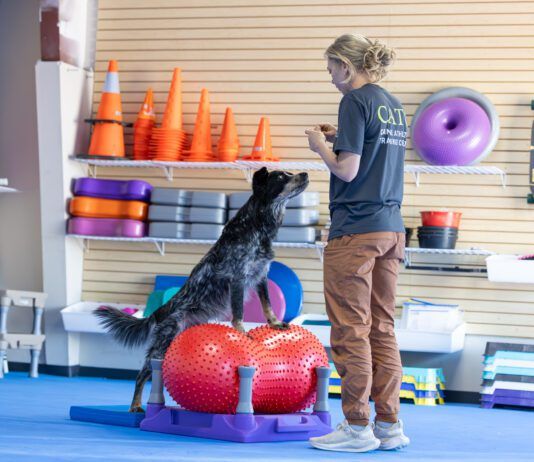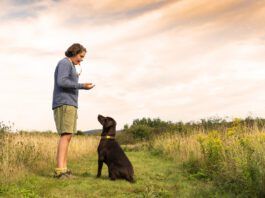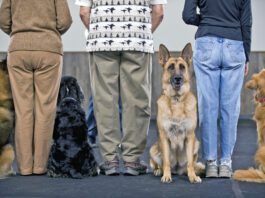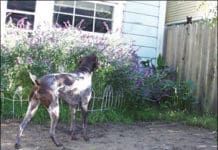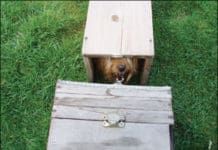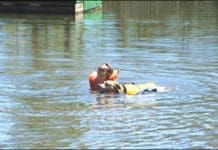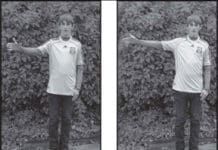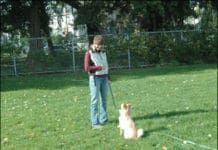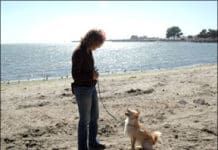Fear-Free Dog Training Methods
or threatening his general well-being if he made the wrong move. It wasn't fear of punishment or fear of me or some sort of amorphous "respect" that he had for me
Train Your Dog to Stop Chasing Cats
Dogs are a predatory species. While cats think of themselves as predators, dogs often think of cats as prey. Still, many canines and felines live together in happy harmony. If yours don’t, here are some things to do when Fido chases Felix. Separate dog and cat when you’re not there to supervise. You need to protect your cat from injury or possible death, and you want to prevent your dog from practicing the unwanted chasing behavior. Depending on the intensity of the chasing behavior, you may want your cat behind a solid door when you’re away to ensure protection, or baby gates may be enough to give kitty safe zones to use as she chooses. When you are there to supervise, you still need to manage your dog so he doesn’t get reinforced for chasing the cat. Having something run away when you chase it is highly reinforcing to a dog with strong predatory behaviors.
How to Stop Your Dog From Chewing All of Your Shoes
For almost any challenging dog event there are at least five relatively easy things you can do to defuse the crisis and reduce the likelihood of a return engagement of the unwanted behavior. Action Plan" is a new column that will offer five simple solutions for one common undesirable dog behavior. Feel free to suggest your favorites!"
Victoria Stilwell Promotes Positive Dog Training on Television
and then it means leash jerk! The dog's not learning to walk close to me because he wants to, he's learning to walk close to me because he fears what's going to happen to him if he doesn't. I have to say this was a long, long, time ago. I thought, This is bizarre
Earthdog, An Underground Dog Training Activity
As long as there have been farmers and hunters, there have been “earth dogs.” Hardy, scrappy little dogs helped hunters tree squirrels, run rabbits to ground, corner foxes in their dens, and clear vermin from dwellings. As often happens, humans found a way to create competitive games from dogs’ natural abilities. For terriers and Dachshunds, a sport is born. Earthdog! Get that rat! As early as 211 B.C., mention was made of tiny rough-coated dogs used to follow animals into their burrows. Later, in the 1576 book De Canibus Anglicis, by Johannes Caius, the use of terriers was described in detail. In 1935, after many years of friends gathering together to test their dogs’ capabilities against those of their friends’ dogs, the Dachshund Club started offering trials modeled after German training for fox and badger hunting. This included building underground tunnels up to 50 feet long, with twists and turns along the way that required dogs to make decisions about which way to go to find their quarry. And it’s dark down there! In 1941 the Sealyham Terrier Club issued the first “working certificate,” which outlined requirements for dogs to search out woodchucks. In 1971 the American Working Terrier Association (AWTA) started artificial den trials in the U.S. By 1994, the American Kennel Club had launched its Earthdog program.
Training the Dog to Stay
Recently, I was struck by the realization that while "Wait!" is one of the most valuable cues I use with my dogs, it's a behavior we didn't usually teach in old-fashioned choke-chain obedience classes. Oh, we taught rock-solid obedience ring "Stays." Some trainers substituted the word "wait" for "stay" to differentiate between recalls ("wait" means you're going to get up and come to me when I call you) and the one-minute and three-minute sit-and-down-stays (stay means you are never to move no matter what happens until I come back to release you). Generally, though, we didn't use "Wait" to mean "pause" as many of us dog owners do today. "Wait" is a valuable cue; I'd be lost without it. Of course, a cue takes on whatever meaning you give to it when you teach your dog a new word or hand signal. We tend to use words that are meaningful to us (they are much easier to remember!) but if you wanted, you could teach your dog that "Banana!" means sit, "Orange" means down, "Pumpkin" means stay, and "Kiwi" means wait. As long as you teach your dog what behavior you want him to associate with your words and use them consistently, your dog will learn the meaning you've assigned to them and the cues will work for you.
Canine Swimming Lessons: The Perfect Exercise For Your Dog
For those of us who regularly swim for fitness, we know why swimming is often referred to as “the perfect exercise.” In addition to the physical benefits shared with other forms of aerobic exercise, swimming offers some unique benefits. It eliminates the effects of weight-bearing on the joints, exercises the entire body – upper and lower – at the same time, and, in most cases, is something we can do for our entire lives, even if age precludes us from taking part in other forms of exercise. The physical benefits of swimming are the same for your canine companion as they are for you – that is, if you have a dog who will swim. Even though they actually have a stroke named after them, the notion that all dogs are “natural swimmers” is an erroneous one. Some breeds were developed to work in water and are more physically adapted for swimming than others. The problem here is not getting these dogs into the water, but keeping them on terra firma when we want them to stay clean and dry. However, occasionally, even a water breed shows disdain for water – yes, there are some Labrador Retrievers who hate swimming. Conversely, there are dogs you’d never imagine taking kindly to the water who become devoted and skilled swimmers. Although not blessed with the physical advantages of a water breed, and despite sinking rear ends or heavy, wet coats, these Boston Terriers, Rhodesian Ridgebacks, and Siberian Huskies have learned to enjoy swimming. They don’t know or care that they have to work a little harder than a Poodle, Cocker Spaniel, or a Newfoundland – they just want to have fun!
Dog Training With Hand Signals
as long as you are consistent.üThis is the gesture I use for cuing "Down!" It's a large signal that can be seen by a dog who is far away.üThis is the gesture I use for cuing "Sit!"I start with my arms at my sides
Teaching a Reliable Recall
The recall response seems to come naturally to some dogs. For others, it’s a hard-won behavior. The Miller pack has some of both.
If Your Dog Goes Missing
For some reason the blinking red light on my phone that signals “message waiting” always seems ominous to me. Last Thursday, my wariness was reinforced: my friend Cindy had left a frantic message. Her dog was lost. “Hattie’s missing!” I could hear the panic in her voice. “I was walking her at Antietam Battlefield last night, the leash came off her collar, and she took off after a deer!” Bad news. In many parts of the country, dogs who chase wildlife or livestock can be shot. There was more bad news as Cindy’s message continued. “I have to leave town today for a work-related retreat. I have people looking for her, but if there’s anything you can do?” I called Cindy back immediately. She had already placed a “lost dog” ad in the paper for her 18-month-old, wheaten-colored, Irish Wolfhound-mix. She had put up posters in the area where Hattie was lost, as well as on the five-mile route between the park and her house in Sharpsburg. She had notified the only shelter in the county that handles stray dogs. She left one of her sweatshirts in the spot where Hattie went missing. And she had people who knew Hattie well - staff from the doggie daycare facility she visited regularly - looking for her. There wasn’t much more I could do. I gave her contact information for a person in Maryland who has a dog trained to find missing pets, and suggested setting a humane dog trap. And praying.
Dog Trainers Use of Generalizing a Behavior
But he does it at home!” Usually uttered in a plaintive wail, this common dog owner complaint is often heard in dog training classes, among other places. When one of my students says this, I reassure them that I believe their dog probably does perform the behavior in question with a high degree of reliability in the comfort of his own home. The fact that he won’t do it in class is usually a generalization issue; the owner has only practiced the behavior with her dog at home. He doesn’t know he’s supposed to do it other places. According to authors Mary Burch, PhD, and Jon Bailey, PhD, in their excellent book, How Dogs Learn, “Generalization occurs when behaviors are seen in contexts other than those in which they were originally trained.” Simply stated, this means practicing with your dog in different places, at different times of the day, under different conditions, in the presence of different people, dogs, and a variety of other distractions.


